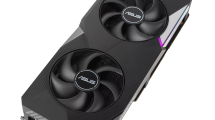The fact that the RTX 2070 is being upgraded is one thing, because this card hasnot sold so badly. The other thing is the GeForce RTX 2070 Super, which wants to scratch the RTX 2080, which in turn, according to the distributors and the board partner, does not really want to be sold - at least as far as the expected quantities are concerned. Price and performance are only one facet, because this card somehow lacked the target group. For Ultra-HD usually too slow and for QHD often far too expensive, because there is already a GeForce RTX 2070 can tidy up properly.
New game, new luck? Let's see what we have. And yes, it really almost looks like on the local TV! Visually, the game has done really well, no question.
Benchmarks in Full HD with 1920 x 1080 pixels
I have deliberately chosen the highest settings for these benchmarks, as all maps here provide very useful frame rates.
The specified gallery id does not exist.
The curves for the FPS gradient, the frametimes, and the percentiles provide further information about what beams cannot fully predict.

F1 2019 - AvFPSoB - 1920x1080 Ultra, TAA

F1 2019 - FPS99th - 1920x1080 Ultra, TAA

F1 2019 - FrameTimeoB - 1920x1080 Ultra, TAA
And now again all the cards individually with the frametime variances, the actual frametimes and of course the Unevenness index (playability and immersion).

F1 2019 - GeForce RTX 2060 FE 6GB - FPSvsFrameTimeDiff - 1920x1080 Ultra, TAA

F1 2019 - GeForce RTX 2060 FE 6GB - FrameTimeSolo - 1920x1080 Ultra, TAA

F1 2019 - GeForce RTX 2060 FE 6GB - Unevenness - 1920x1080 Ultra, TAA

F1 2019 - GeForce RTX 2060 Super 8 GB - FPSvsFrameTimeDiff - 1920x1080 Ultra, TAA

F1 2019 - GeForce RTX 2060 Super 8 GB - FrameTimeSolo - 1920x1080 Ultra, TAA

F1 2019 - GeForce RTX 2060 Super 8 GB - Unevenness - 1920x1080 Ultra, TAA

F1 2019 - GeForce RTX 2070 FE 8GB - FPSvsFrameTimeDiff - 1920x1080 Ultra, TAA

F1 2019 - GeForce RTX 2070 FE 8GB - FrameTimeSolo - 1920x1080 Ultra, TAA

F1 2019 - GeForce RTX 2070 FE 8GB - Unevenness - 1920x1080 Ultra, TAA

F1 2019 - GeForce RTX 2070 Super 8GB - FPSvsFrameTimeDiff - 1920x1080 Ultra, TAA

F1 2019 - GeForce RTX 2070 Super 8GB - FrameTimeSolo - 1920x1080 Ultra, TAA

F1 2019 - GeForce RTX 2070 Super 8GB - Unevenness - 1920x1080 Ultra, TAA

F1 2019 - GeForce RTX 2080 FE 8GB - FPSvsFrameTimeDiff - 1920x1080 Ultra, TAA

F1 2019 - GeForce RTX 2080 FE 8GB - FrameTimeSolo - 1920x1080 Ultra, TAA

F1 2019 - GeForce RTX 2080 FE 8GB - Unevenness - 1920x1080 Ultra, TAA

F1 2019 - Radeon VII 16GB - FPSvsFrameTimeDiff - 1920x1080 Ultra, TAA

F1 2019 - Radeon VII 16GB - FrameTimeSolo - 1920x1080 Ultra, TAA

F1 2019 - Radeon VII 16GB - Unevenness - 1920x1080 Ultra, TAA
Benchmarks in QHD with 2560 x 1440 pixels
The settings for these resolutions can still be chosen as high throughout, but it is already a compromise for better playability.

F1 2019 - FPS - 2560x1440 Ultra, TAA

F1 2019 - FrameTime - 2560x1440 Ultra, TAA

F1 2019 - FrameTimeVariance - 2560x1440 Ultra, TAA

F1 2019 - Unevenness - 2560x1440 Ultra, TAA
The curves for the FPS gradient, the frametimes, and the percentiles provide further information about what beams cannot fully predict.

F1 2019 - AvFPSoB - 2560x1440 Ultra, TAA

F1 2019 - FPS99th - 2560x1440 Ultra, TAA

F1 2019 - FrameTimeoB - 2560x1440 Ultra, TAA
And now again all the cards individually with the frametime variances, the actual frametimes and of course the Unevenness index (playability and immersion).

F1 2019 - GeForce RTX 2060 FE 6GB - FPSvsFrameTimeDiff - 2560x1440 Ultra, TAA

F1 2019 - GeForce RTX 2060 FE 6GB - FrameTimeSolo - 2560x1440 Ultra, TAA

F1 2019 - GeForce RTX 2060 FE 6GB - Unevenness - 2560x1440 Ultra, TAA

F1 2019 - GeForce RTX 2060 Super 8 GB - FPSvsFrameTimeDiff - 2560x1440 Ultra, TAA

F1 2019 - GeForce RTX 2060 Super 8 GB - FrameTimeSolo - 2560x1440 Ultra, TAA

F1 2019 - GeForce RTX 2060 Super 8 GB - Unevenness - 2560x1440 Ultra, TAA

F1 2019 - GeForce RTX 2070 FE 8GB - FPSvsFrameTimeDiff - 2560x1440 Ultra, TAA

F1 2019 - GeForce RTX 2070 FE 8GB - FrameTimeSolo - 2560x1440 Ultra, TAA

F1 2019 - GeForce RTX 2070 FE 8GB - Unevenness - 2560x1440 Ultra, TAA

F1 2019 - GeForce RTX 2070 Super 8GB - FPSvsFrameTimeDiff - 2560x1440 Ultra, TAA

F1 2019 - GeForce RTX 2070 Super 8GB - FrameTimeSolo - 2560x1440 Ultra, TAA

F1 2019 - GeForce RTX 2070 Super 8GB - Unevenness - 2560x1440 Ultra, TAA

F1 2019 - GeForce RTX 2080 FE 8GB - FPSvsFrameTimeDiff - 2560x1440 Ultra, TAA

F1 2019 - GeForce RTX 2080 FE 8GB - FrameTimeSolo - 2560x1440 Ultra, TAA

F1 2019 - GeForce RTX 2080 FE 8GB - Unevenness - 2560x1440 Ultra, TAA

F1 2019 - Radeon VII 16GB - FPSvsFrameTimeDiff - 2560x1440 Ultra, TAA

F1 2019 - Radeon VII 16GB - FrameTimeSolo - 2560x1440 Ultra, TAA

F1 2019 - Radeon VII 16GB - Unevenness - 2560x1440 Ultra, TAA
Benchmarks in Ultra HD with 3840 x 2160 pixels
Ultra-HD works well if you adjust the settings even further down. For me, the benchmark design is primarily about playability and only second only to absolute beauty.

F1 2019 - FPS - 4K High, TAA

F1 2019 - FrameTime - 4K High, TAA

F1 2019 - FrameTimeVariance - 4K High, TAA

F1 2019 - Unevenness - 4K High, TAA
The curves for the FPS gradient, the frametimes, and the percentiles provide further information about what beams cannot fully predict.

F1 2019 - AvFPSoB - 4K High, TAA

F1 2019 - FPS99th - 4K High, TAA

F1 2019 - FrameTimeoB - 4K High, TAA
And now again all the cards individually with the frametime variances, the actual frametimes and of course the Unevenness index (playability and immersion).

F1 2019 - GeForce RTX 2060 FE 6GB - FPSvsFrameTimeDiff - 4K High, TAA

F1 2019 - GeForce RTX 2060 FE 6GB - FrameTimeSolo - 4K High, TAA

F1 2019 - GeForce RTX 2060 FE 6GB - Unevenness - 4K High, TAA

F1 2019 - GeForce RTX 2060 Super 8 GB - FPSvsFrameTimeDiff - 4K High, TAA

F1 2019 - GeForce RTX 2060 Super 8 GB - FrameTimeSolo - 4K High, TAA

F1 2019 - GeForce RTX 2060 Super 8 GB - Unevenness - 4K High, TAA

F1 2019 - GeForce RTX 2070 FE 8GB - FPSvsFrameTimeDiff - 4K High, TAA

F1 2019 - GeForce RTX 2070 FE 8GB - FrameTimeSolo - 4K High, TAA

F1 2019 - GeForce RTX 2070 FE 8GB - Unevenness - 4K High, TAA

F1 2019 - GeForce RTX 2070 Super 8GB - FPSvsFrameTimeDiff - 4K High, TAA

F1 2019 - GeForce RTX 2070 Super 8GB - FrameTimeSolo - 4K High, TAA

F1 2019 - GeForce RTX 2070 Super 8GB - Unevenness - 4K High, TAA

F1 2019 - GeForce RTX 2080 FE 8GB - FPSvsFrameTimeDiff - 4K High, TAA

F1 2019 - GeForce RTX 2080 FE 8GB - FrameTimeSolo - 4K High, TAA

F1 2019 - GeForce RTX 2080 FE 8GB - Unevenness - 4K High, TAA

F1 2019 - Radeon VII 16GB - FPSvsFrameTimeDiff - 4K High, TAA

F1 2019 - Radeon VII 16GB - FrameTimeSolo - 4K High, TAA

F1 2019 - Radeon VII 16GB - Unevenness - 4K High, TAA







































































































Kommentieren